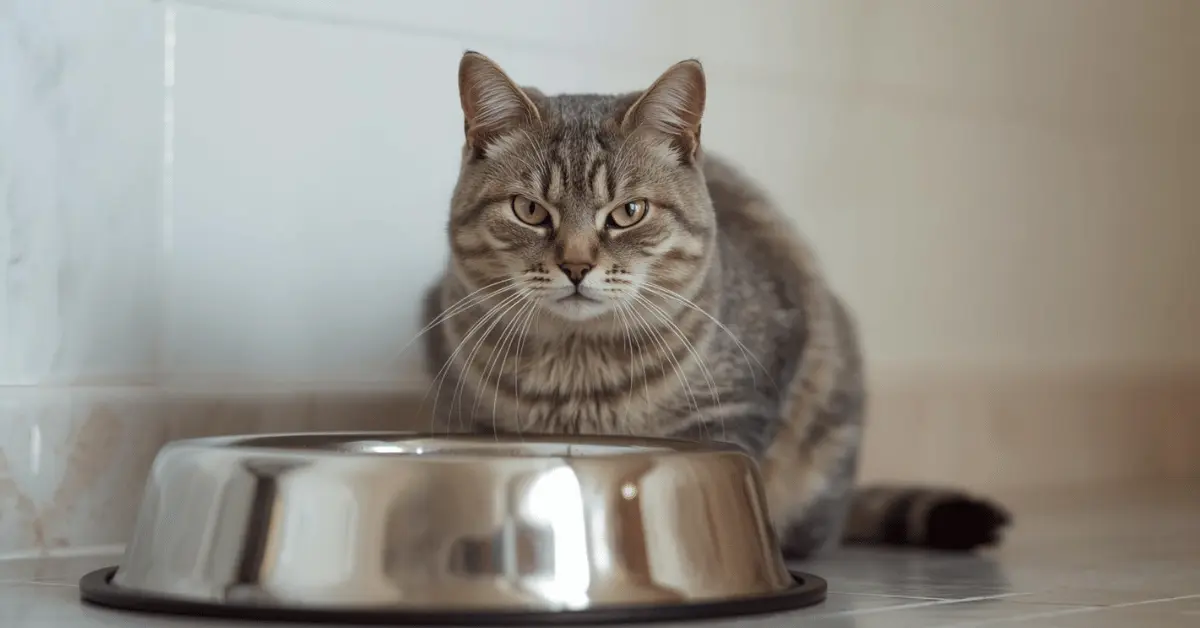When a cat refuses food or water, owners naturally panic. Cats are known for being picky eaters, but prolonged fasting or dehydration can quickly turn into a life-threatening emergency.
Why Water Matters More Than Food
The Importance of Hydration in Cats
Cats naturally have a lower thirst drive compared to dogs, since their ancestors adapted to desert environments.
- Kidney function and toxin removal
- Regulation of body temperature
- Digestion and nutrient absorption
- Joint lubrication and overall energy levels
How Long Can Cats Survive Without Water?
On average, a healthy cat can only live about 3 days without water. In warm climates or in cats with kidney disease, this timeframe shrinks dramatically.
Bottom line: dehydration is a more immediate threat than hunger.
How Long Cats Can Go Without Food
Survival Time Without Eating
Cats may survive up to one to two weeks without food, as long as water is available. However, just because survival is possible doesn’t mean it’s safe.
The Biggest Risk: Hepatic Lipidosis
When cats stop eating, their bodies break down fat for energy. Unfortunately, cats’ livers are not efficient at processing large amounts of fat. The result is hepatic lipidosis (fatty liver disease)—a life-threatening condition that often develops after just 3–5 days of fasting.
Signs of this include:
- Rapid weight loss
- Yellowing of the eyes or gums (jaundice)
- Severe lethargy
- Vomiting or drooling
If untreated, hepatic lipidosis can be fatal.
Related Posts
- Why Do Cats Meow at Night?
- Are Prayer Plants Toxic to Cats?
- 6 Smart Ways to Convince Your Parents to Let You Get a Cat
Special Considerations for Kittens, Seniors & Sick Cats
Kittens
Kittens have extremely fast metabolisms and tiny reserves of fat. Going even 12–24 hours without food can be fatal. They must eat regularly to maintain blood sugar and energy levels.
Senior Cats
Older cats often have weaker immune systems and existing health problems. A senior cat that stops eating or drinking should be considered an emergency case from the start.
Cats with Chronic Conditions
Conditions like diabetes, hyperthyroidism, or kidney disease accelerate the risks of fasting or dehydration.
Causes of Food and Water Refusal
Cats may refuse food or water for reasons ranging from simple pickiness to severe medical conditions.
Common Causes Include:
- Stress or environmental changes (new home, new pet, loud noises)
- Illness (infections, liver disease, kidney issues)
- Dental pain (tooth decay, gingivitis, oral ulcers)
- Gastrointestinal problems (blockages, constipation, inflammatory bowel disease)
- Post-surgery or medication side effects
- Food-related issues (spoiled food, dislike of new diet)
Understanding the cause is key to solving the problem—your vet can help identify it quickly.
Warning Signs You Shouldn’t Ignore
If your cat isn’t eating or drinking, monitor for these red flags:
Signs of Dehydration
- Dry, tacky gums
- Loss of skin elasticity (skin tent test)
- Sunken eyes
- Reduced urination or empty litter box
Signs of Starvation
- Lethargy and weakness
- Vomiting or diarrhea
- Rapid weight loss
- Jaundice (yellow eyes or gums)
- Refusal to eat for more than 24 hours
Any of these signs call for immediate veterinary intervention.
What to Do if Your Cat Refuses Food or Water
At-Home Steps
- Encourage hydration – Offer fresh, cool water, add ice cubes, or use a pet fountain. Many cats prefer running water.
- Switch food textures – Offer wet food, tuna juice, or boiled chicken. Warming food slightly can make it more appealing.
- Reduce stress – Provide a quiet feeding environment away from noise or other pets.
- Mix in broth – Low-sodium chicken broth can entice drinking and increase fluid intake.
When to See the Vet
Call your vet immediately if:
- Your cat hasn’t eaten or drunk in 24 hours
- You notice signs of jaundice, vomiting, or lethargy
- Your cat is very young, old, or has a chronic illness
Veterinarians can provide IV fluids, appetite stimulants, or feeding tubes if necessary.
Prevention and Long-Term Care
Keeping Your Cat Eating and Drinking Regularly
- Provide a mix of wet and dry food to ensure hydration and nutrition.
- Keep water bowls clean and full at all times.
- Use multiple water sources around your home.
- Schedule regular vet checkups to catch illnesses early.
- Monitor daily habits – pay attention to food and water intake. Cats are experts at hiding illness, so small changes matter.
Common Myths
Myth 1: “Cats Will Eat When They’re Hungry Enough”
This is a dangerous misconception. Unlike dogs, cats won’t necessarily eat once they feel hunger. A stressed, sick, or picky cat may continue refusing food—even to the point of starvation.
Myth 2: “Dry Food Provides Enough Water”
While dry kibble contains trace amounts of moisture, it’s nowhere near enough to meet a cat’s hydration needs. Cats on an exclusively dry diet often drink less water than required, putting them at risk for urinary tract and kidney problems.
Myth 3: “Milk is a Good Substitute for Water”
Many cats are lactose intolerant, and milk can cause digestive upset, including diarrhea and dehydration. Fresh water (and wet cat food) remain the safest ways to keep cats hydrated.
Building Healthy Eating and Drinking Habits
Encouraging Regular Eating
- Consistent routine: Feed your cat at the same times each day to establish predictable habits.
- Small, frequent meals: This mimics natural hunting behaviour and prevents overeating or refusal.
- Food enrichment: Puzzle feeders and treat balls stimulate curiosity while encouraging consistent eating.
Promoting Better Hydration
- Water fountains: Many cats prefer moving water to stagnant bowls.
- Variety of sources: Place multiple bowls around the house so cats always have easy access.
- Flavour boosters: Add a splash of tuna water or low-sodium broth to encourage picky drinkers.
Developing these habits not only prevents emergencies but also improves long-term feline health, reducing risks of kidney disease, urinary tract issues, and obesity.


1 thought on “How Long Can a Cat Go Without Eating or Drinking? Vet-Approved Guide”